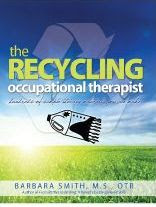Now parents can benefit from her wisdom by
reading Retro Baby (American Academy
of Pediatrics, 2013). Like many in the early
childhood development field, Dr. Zachry is concerned about the impact of the commercialization
of baby development. The solution is getting back to baby basics…..
Advertisements
have been around a long time, but parents today are inundated with messages
coming from stores, televisions, tablets and Iphone screens-telling them what expensive
positioning device or learning tools speed up development, enabling babies to
compete in our complex world. Retro Baby
is here to refute the claims and share the facts about child development. This
guide actually teaches parents how to prevent harming their children! So let’s
take a look at this Retro World……
Dr.
Zachry begins by comparing the parent of a generation ago who might have
purchased 1 or 2 items, perhaps a stroller or baby backpack to use during a
walk. Today the choices are overwhelming and expensive as parents are told to
buy positioning devices (i.e. bouncy seats, jumpers, walkers and learning
saucers). These devices take time away from the sensory stimulation gained from
active movement while held or on the floor.
Retro Baby explores the impact of smart toys
and the so called educational television shows and DVDs that are supposed to produce
baby Einsteins. I love how the author researches the facts, provides references
for further study and then simplifies concepts for readers in the ‘Truth Be
Told” sections. For example, babies don’t need electronic toys….. "a simple set
of building blocks provides endless entertainment and is wonderful for baby’s
visual and motor skill development.”
Readers,
of course need to not only learn what pitfalls to avoid, but how to get back to
basics such as:
·
Providing a variety of safe, stimulating
tummy time activities and why this is sooooo important!
·
Stimulating the visual system to develop
depth perception and eye-hand coordination
·
Positioning to avoid skull deformities
and torticollis
·
Suspended mobiles to stimulate visual
tracking, listening and focusing
·
Baby massage
·
Activities to improve head control and
focus such as singing Patty Cake with baby sitting on parent’s belly
Dr. Zachry also includes a wealth of information and
activities that address concerns such as:
·
Overcoming “tummy-time “ resistance
·
Positioning and stretching strategies
for babies with skull deformities or torticollis
·
When and how to swaddle a baby safely
·
How to choose safe equipment such as changing
tables and cribs
Chapters 6-10 focus on the Retro activities baby
boomers such as myself grew up with -when high tech meant Captain Kangaroo on
television…. These chapters include a wealth of developmental activities such
as
·
Playing horsey while bouncing on mama’s
knees-for sensory stimulation and developing trunk strength
·
Pulling scarves out of containers-to
develop fine-motor control
·
“Rock-On” activity- to develop standing
balance and;
·
“Shop’til you drop” activity -to develop squatting
skills
As the Recycling Occupational Therapist, of course I
love Dr. Zachry’s low cost, yet effective approach and frequent use of home-made
learning toys/activities. I highly recommend
this book to the discerning parents who want to provide sensory rich “Retro” learning environments.
























